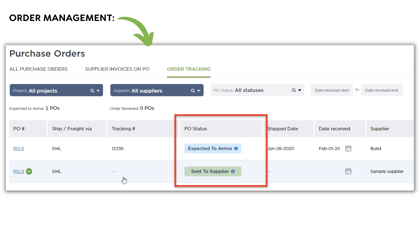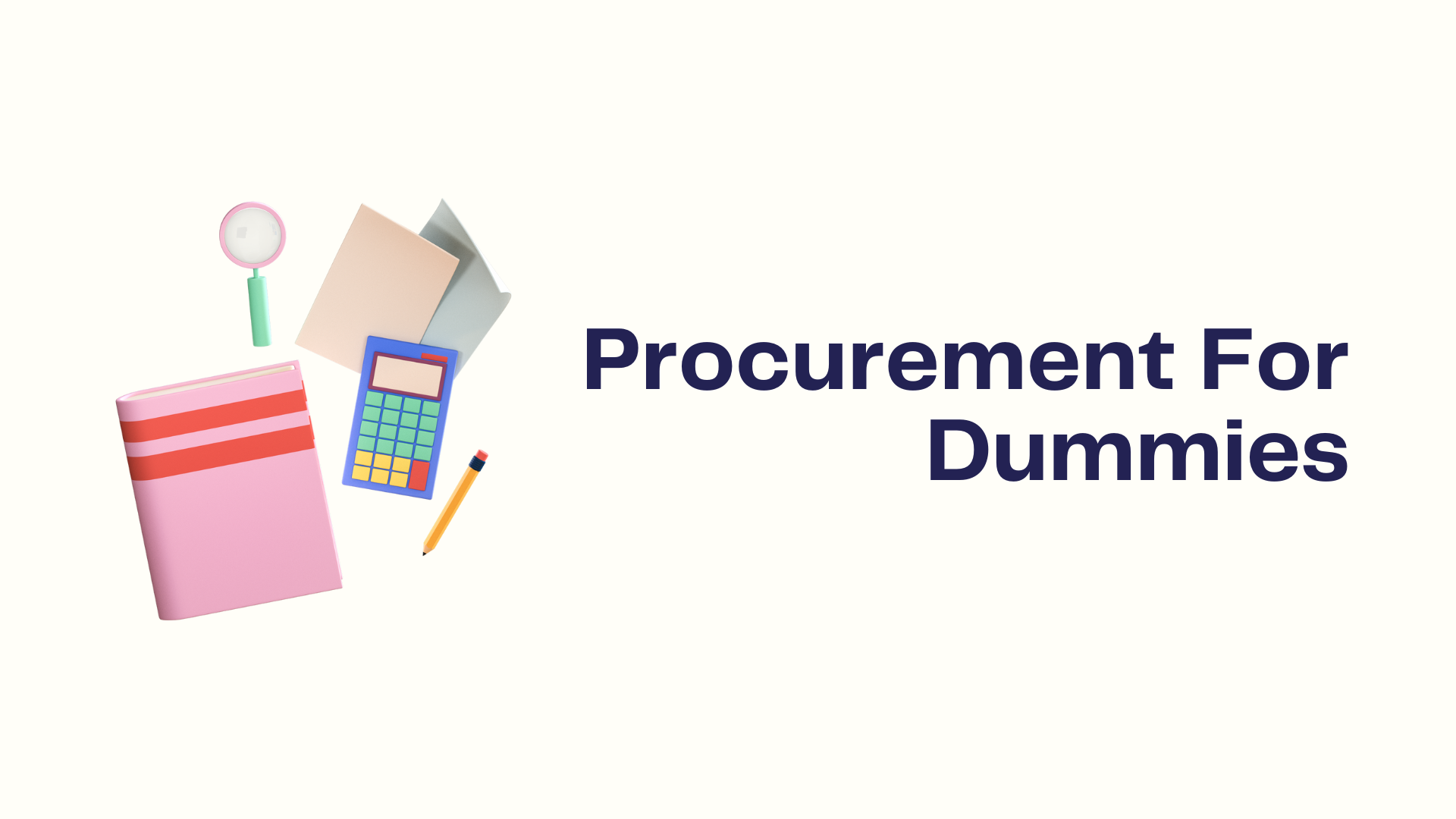
Manage FF&E specification, procurement, and product data at scale. Take on bigger projects with confidence and grow your firm with Fohlio. Schedule a demo or book a consultation with one of our account managers to explore these features today.
What is procurement?
Procurement is the process of identifying and negotiating terms with an independent factor to acquire goods, services, or works. This can usually be done via a tendering or competitive bidding procedure. When quality, quantity, time, and location are assessed, procurement as an organizational system is designed to make sure that the buyer/client receives the optimal price for goods, services, or works.
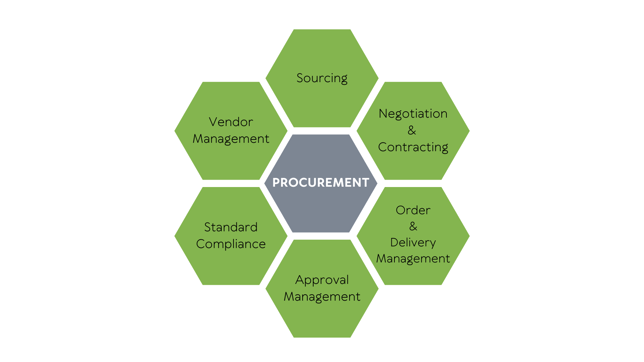 Purchasing decisions take into account many elements including shipping and handling, marginal utility, and trade price variations. Those in this role may typically find themselves responsible for tasks like:
Purchasing decisions take into account many elements including shipping and handling, marginal utility, and trade price variations. Those in this role may typically find themselves responsible for tasks like:
- Order approval
- Building approved vendor lists
- Negotiating pricing and contracts with vendors
- Going over technical specifications for materials
- Monitoring purchase orders, deliveries, and dispatch
- Forecasting supplies
- Standard compliance monitoring
Why is it so crucial?
Other than getting products at the best price, companies need an effective procurement process that minimizes unwanted project waste to make room for profitability. Companies that have also taken a corporate social responsibility approach (like applying sustainable practices) are more likely to require that their purchasing activities take into account broader societal and ethical factors.
Procurement vs. Acquisition
Procurement is a part of the larger idea of sourcing and acquisition. Procurement is typically seen as more tactical (the practice of physically purchasing a product or service), whereas sourcing and acquisition are seen as more strategic and comprehensive.
Building Your Procurement Process
Now that you’ve got a good idea of the differences between procurement and acquisition, we can finally get down to the good stuff. Creating an effective procurement process is best done by combining an effective acquisition strategy with a procurement documentation template.
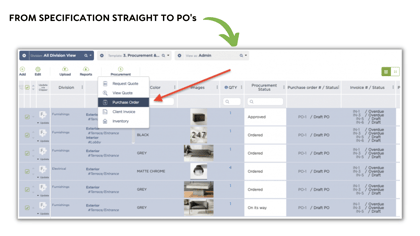
1- Identifying needs
This is the most important stage of the procurement process because it’s the part that will define the rest of the flow for your projects. Here you talk about the materials and products you need to procure, the standards that shape the framework for selecting these products as well as the scope of your project.
2- Qualifying vendors
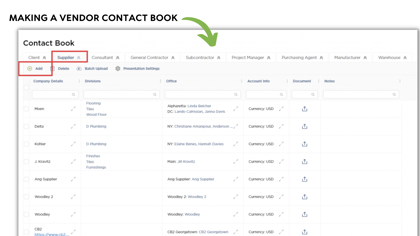
Qualifying your vendors helps you and your company stay competitive. By thoughtfully managing your suppliers you can:
- Avoid crazy price hikes
- Have better assurance in product quality
- Have a steady supply for your company
3- Pricing contracts and negotiation
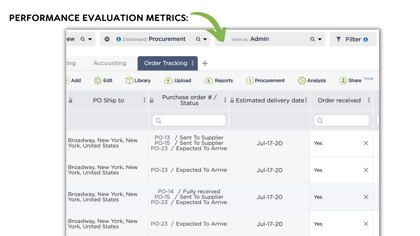
When your purchasing manager works with suppliers to agree on costs and terms for acquiring supplies or services, this is known as procurement negotiation. This might happen when working with a new supplier or when renegotiating purchasing pricing or terms with an established vendor. So what's typically included in negotiating a procurement contract? Here are a few points.
- KPI's
- Payment terms/contractual terms
- Qualifying products and services as well as quantity or volume
- Costing and cost savings opportunities
- Time, frequency, and schedule of deliveries
- Return policy and warranty
- Maintenance
- Reordering
4- Invoice management and payment processing
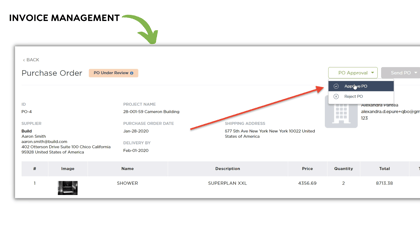
Keep tabs on everything by documenting your transactions with receipts. Having a historical log of your data has its internal and external benefits. Internally, you have a record that keeps all the details you need for future project use. Externally, the same data you saved can be used for supplier negotiation.
5- Order and dispatch management
Comparing lead time to actual delivery dates and overseeing the number of products that have been delivered in perfect condition in comparison to the number of damaged products can make or break your project lifecycle. This is why the procurement department (or any procurement team for that matter)
Learn more: How to Make Purchase Order Management Less Chaotic and More Hardworking
6- Deployment of services and vendor performance evaluation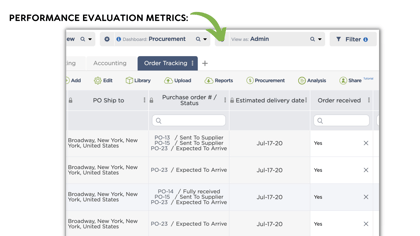
After all the negotiations, comes the execution stage of the project. The crucial part of this stage comes later, during the performance evaluation. This is the stage where a firm can identify two things:
- The qualification of their vendors for a repeat transaction
- Identifying parts of the execution that can be done more efficiently to continually improve this process going forward.
Learn more: How to Measure Construction Procurement Success: Basic Key Performance Metrics
E-Procurement
What good would all the knowledge be if we didn't have the instruments to execute what we've learned?
The process of requesting, ordering, and acquiring products and services online is known as electronic procurement, also known as e-procurement or supplier exchange. It is a business-to-business transaction.
E-procurement reduces the need for cumbersome procurement-related tasks. The goal of e-procurement is to be able to connect multiple organizations, data, and their processes through a centralized platform. Here are a couple more advantages that e-procurement can bring to your company:
- e-sourcing: defining needs and pre-qualifying potential suppliers
- e-tendering: information requests, proposals, and quotations;
- e-auctioning: supplier evaluation, negotiation, and contract management
- e-ordering and payment: generating requisitions and purchase orders, as well as receiving payment
- centralized vendor management: establishing and maintaining connections between your company and suppliers/partners by negotiating contracts, developing vendor standards, and locating the best available vendors.
The best tool would be one that could do all those things for you in one central platform.
And that's high-level procurement for you. Now, you can get down and start effectively building your procurement process.
Manage FF&E specification, procurement, and product data at scale. Take on bigger projects with confidence and grow your firm with Fohlio. Schedule a demo or book a consultation with one of our account managers to explore these features today.
https://www.fohlio.com/features/automate-procurement-inventory-software
References:
Expore Fohlio
Learn how to:
- Save days of work with faster specification
- Create firm-wide design standards
- Automate and centralize procurement
- Keep your whole team on the same Page
- Manage product data
- Track budget against cost in real time.
- Prepare for asset valuation
Published Jun 14, 2022
